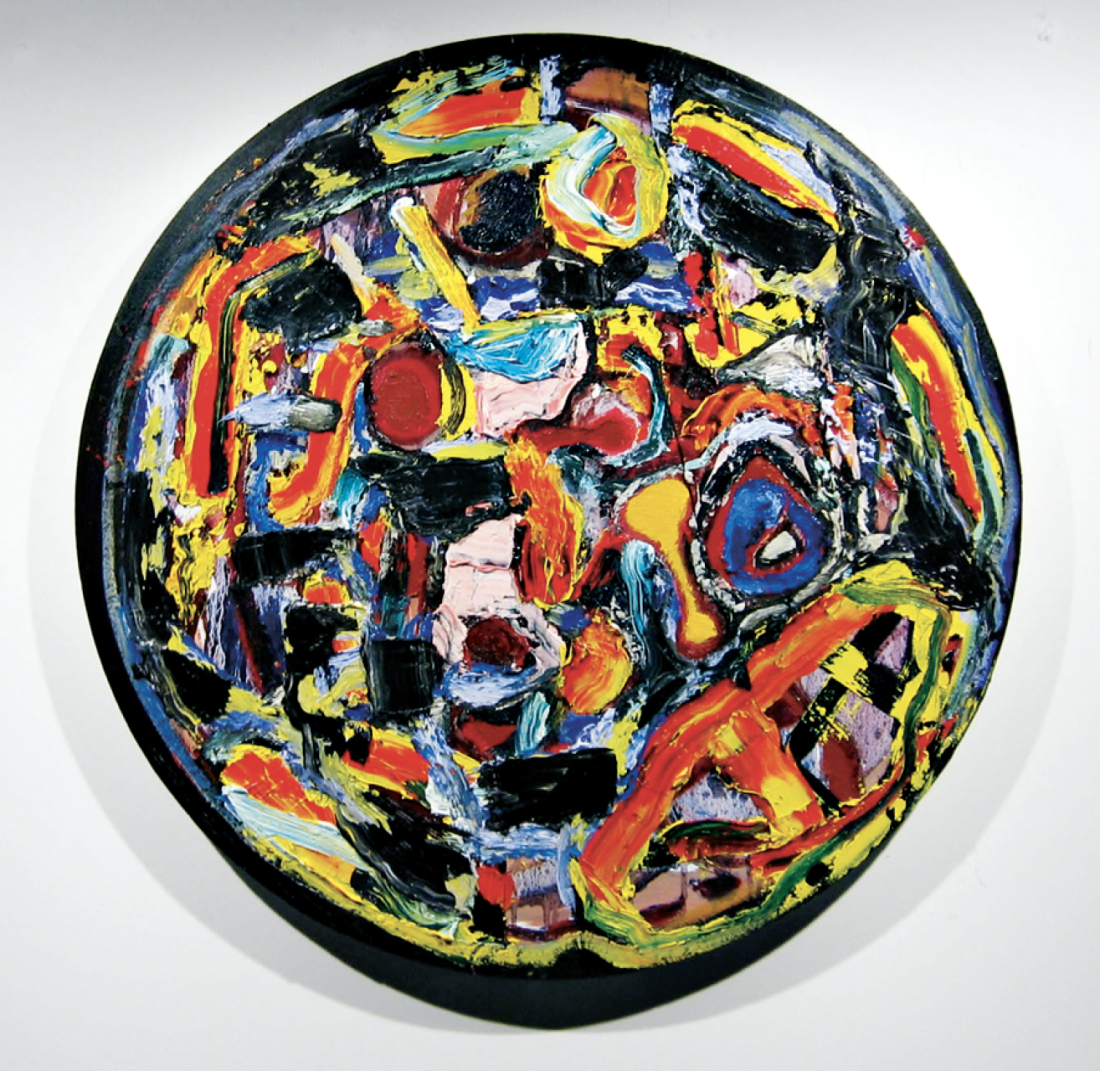Harold Klunder
I took a pleasing two-hour train ride to London one morning in January to view Harold Klunder’s “New Paintings,” exhibited at the Michael Gibson Gallery. Arrival was more akin to stepping off a two-hour flight to the Bahamas. Clear Light, the first painting, shimmered like heat rising off a lowtide sandscape. Yellows and violets exchanged breaths while my eyes strolled the canvas, combing for treasures. This painting has all the qualities I love in a work—immediacy and timelessness, strength and gentleness, tradition and the new. I succumbed.
I think anyone who has been following Klunder’s work over the years is still somewhat astounded by the “new” (it’s going on 10 years now) Harold who wields paint to its fullest connotations. Had his paintings continued to thicken, they might have pulled the walls down but then their forms, which had taken years to, well, form out of earlier, more gestural, figurations, began spacing themselves, thawing their paint while diluting the spatial “paint” between their forms. I speak of forms and space as paint because Klunder’s world is paint. It is alluvial; it flows and slows, deposits here what it swept up there.

Harold Klunder, The Birth of Liquid Desires #1, 2005–07, oil on linen on board, 32” in diameter. Images: courtesy Michael Gibson Gallery, London, Ontario.
Klunder works in two studios— Montreal and Flesherton—and I don’t know which, among the 17 works, came from which studio. There is a variety to the exhibition that reflects both a temporal and physical sense of place. Most works indicate a two-year creation date and the show is evidence of a mutability and a paradoxical unity.
Three diptychs, 48” by 72”, continue a theme of mirror imaging (mind/matter, day/night, despair/ hope). Each pair is connected by elements that could be described as bridges, hinges, arteries that traverse a slender, but not negligible, vertical gap dividing the two halves. The palettes function alternatively as organic, emotional and physical, inviting all three diptychs to be regarded as part of a suite, beyond their similarities of structure and scale.

Harold Klunder, Of Mind and Matter, Day and Night, 2005–07, diptych, oil on linen on board, 48 x 72”.
Yellows and reds are prominent in this show, toned down with neutrals— what Klunder calls the “rest places.” One painting titled Ostara (The First Day of Spring) seems made of egg yolk, lilac and cherry blossom. Two square works titled The Form of Movement in Water and Air are almost chalky in their delicacy. Another square work titled Sound and Silence revives a colour field sensibility. When asked about yellow, in a conversation between the gallery’s director and the artist, Klunder replied that yellow, with its antecedents in Van Gogh and Turner, challenges him the way a square format does for someone who is essentially painting a circle within a square.
Klunder, happily, is unstoppable. Two 32”-tondos titled The Birth of Liquid Desires are the most recent in the work presented and announce the next renaissance. Colours are once again high and thick, packed with the “say everything” feel for which Klunder is known. They differ from other tondos by this artist. Here he has painted in their circumferences, giving them a spherical dimension. Were they huge, I would expect pending galactic explosions. This time I identified more with the physiology of the eye, with liquid desires residing in the vitreous humour, the clear gel through which all light must pass in order for us to experience what we call sight. ■
Harold Klunder’s “New Paintings” was exhibited at Michael Gibson Gallery in London, Ontario, from January 11 to February 16, 2008.
Virginia Dixon is a painter living in Toronto.

